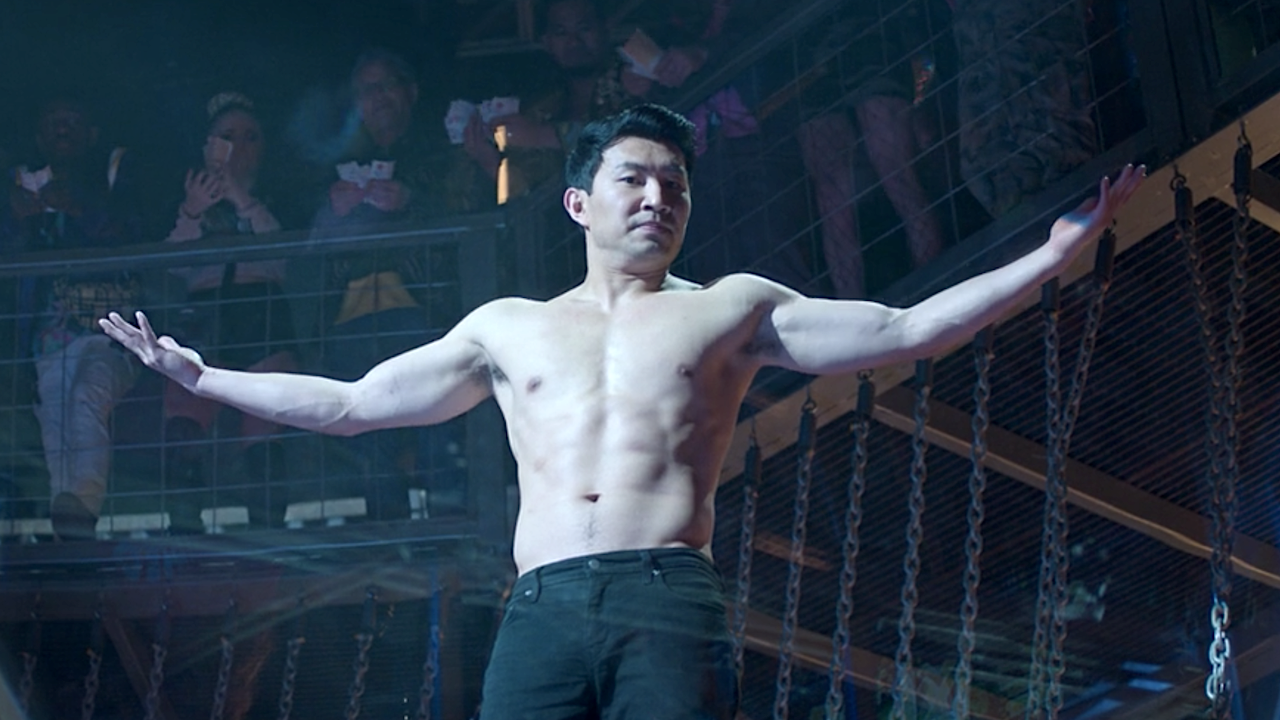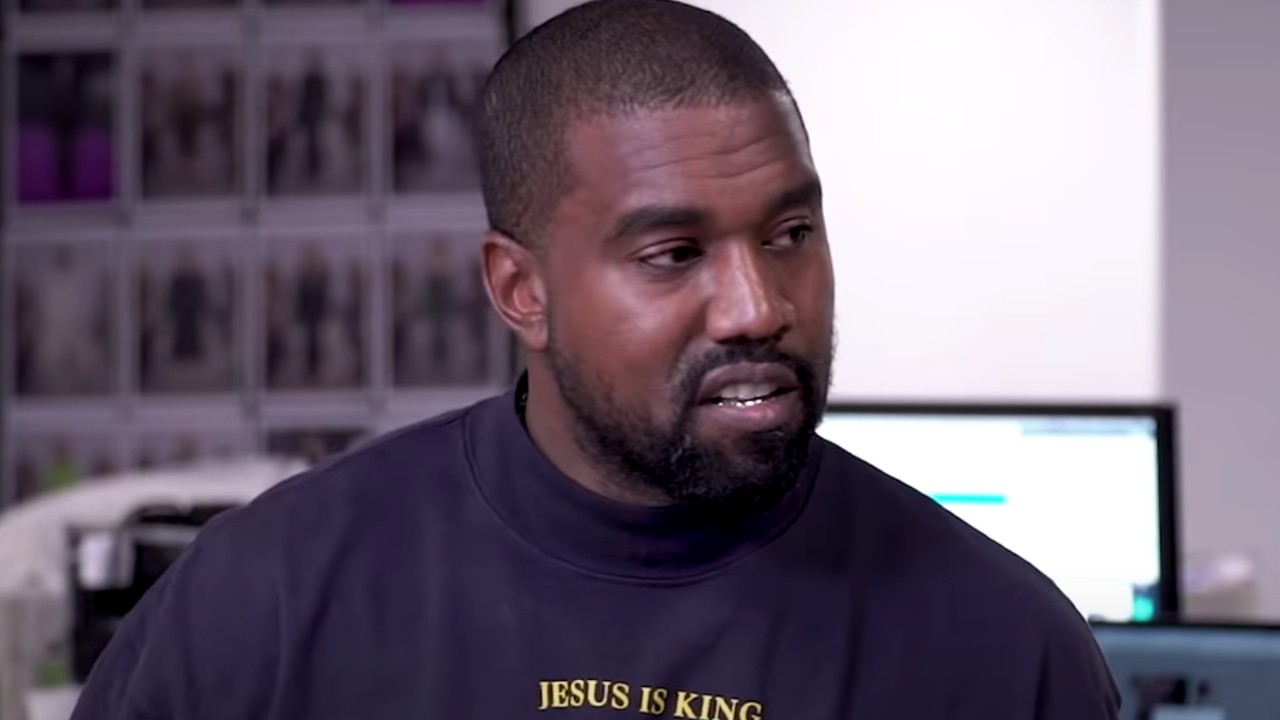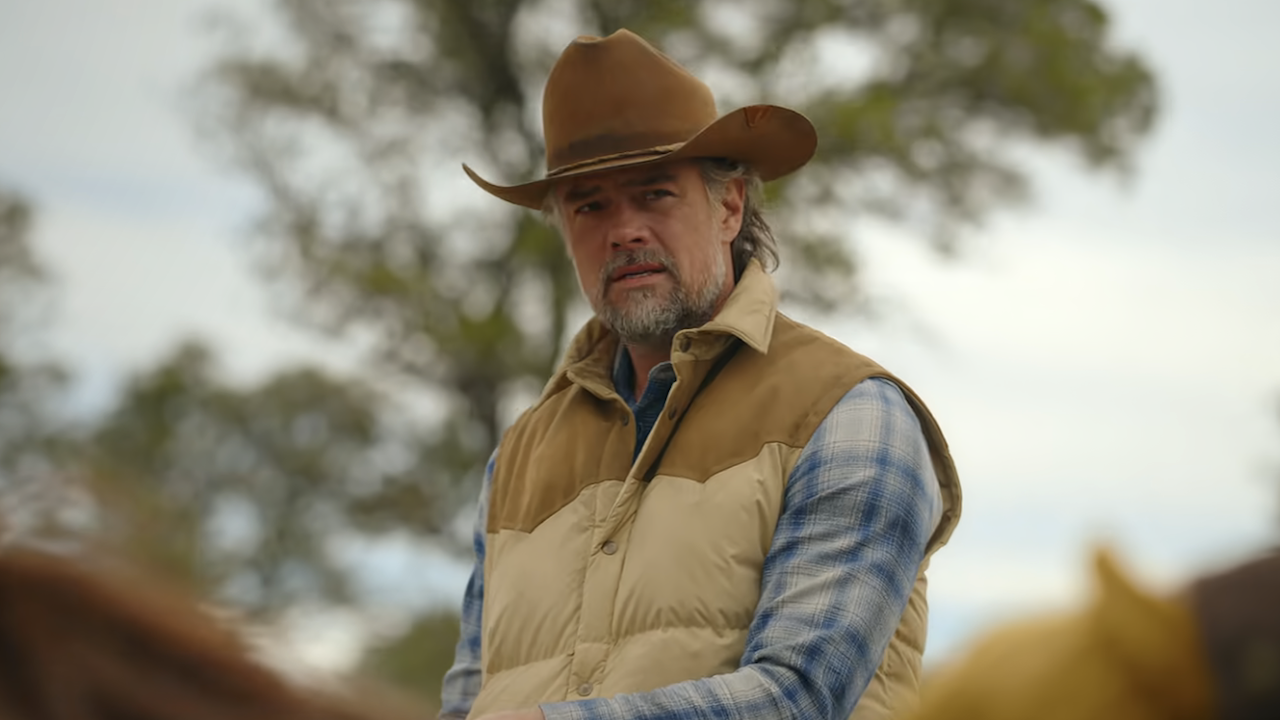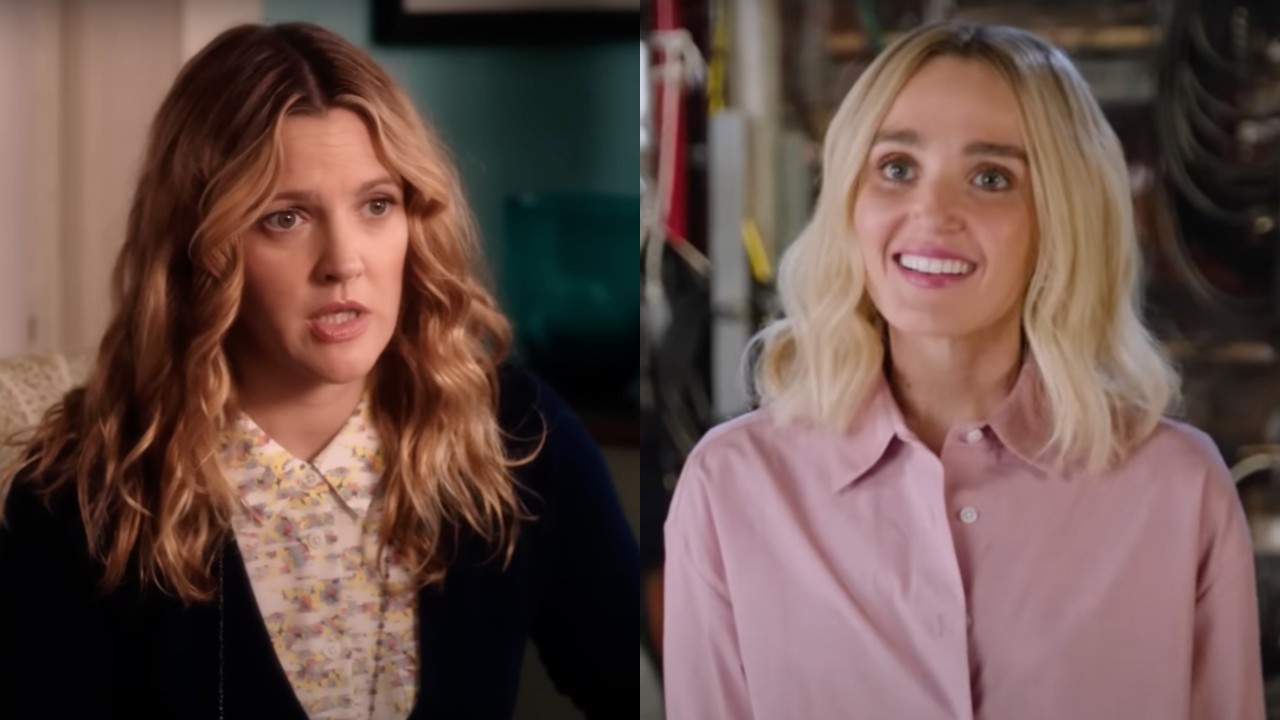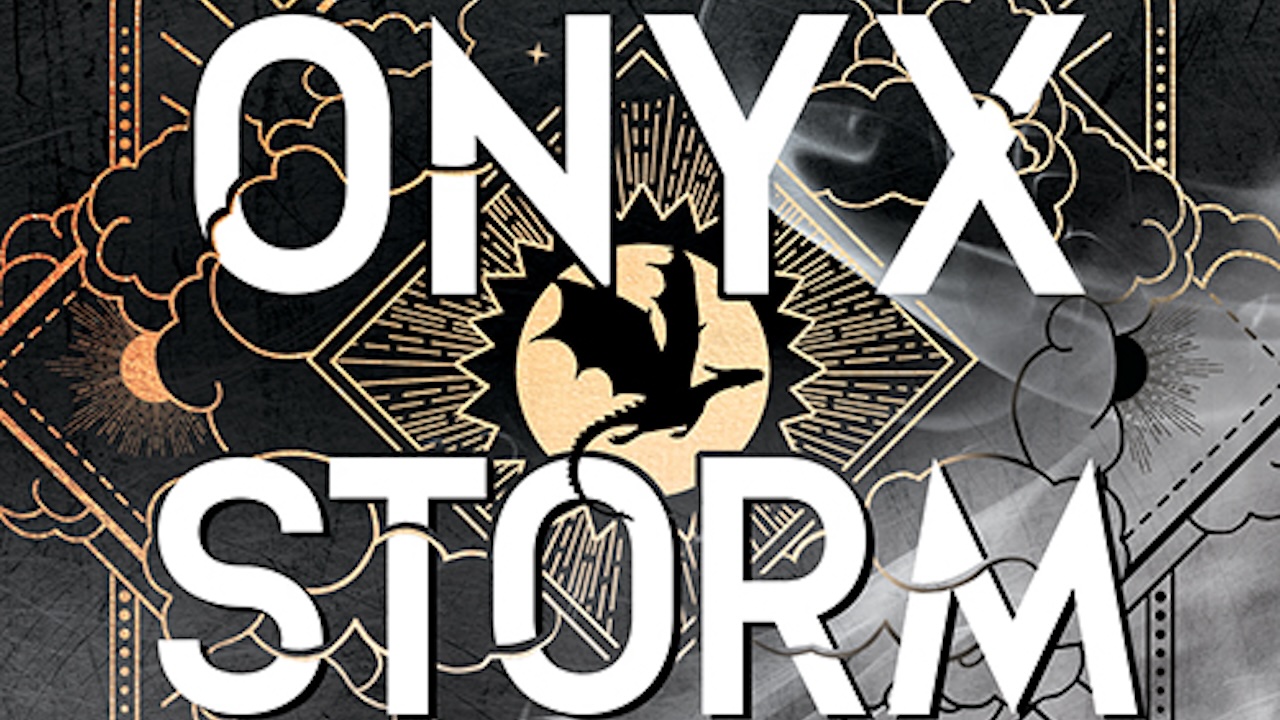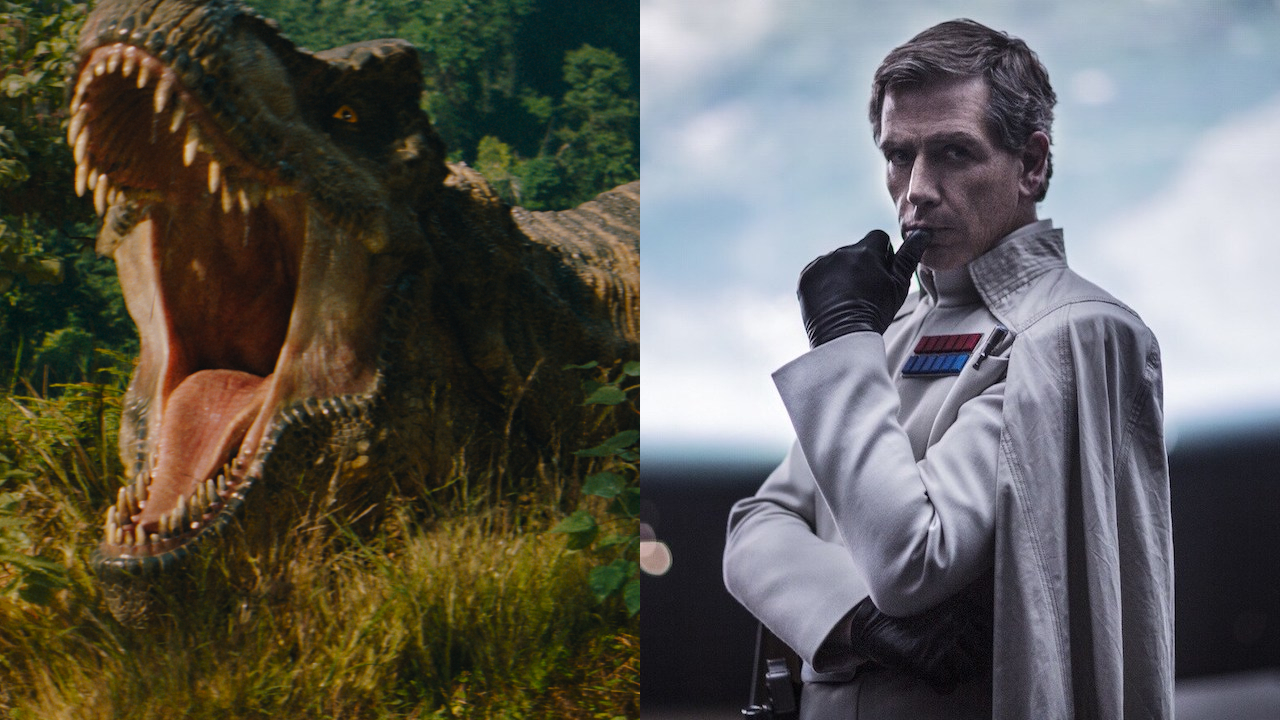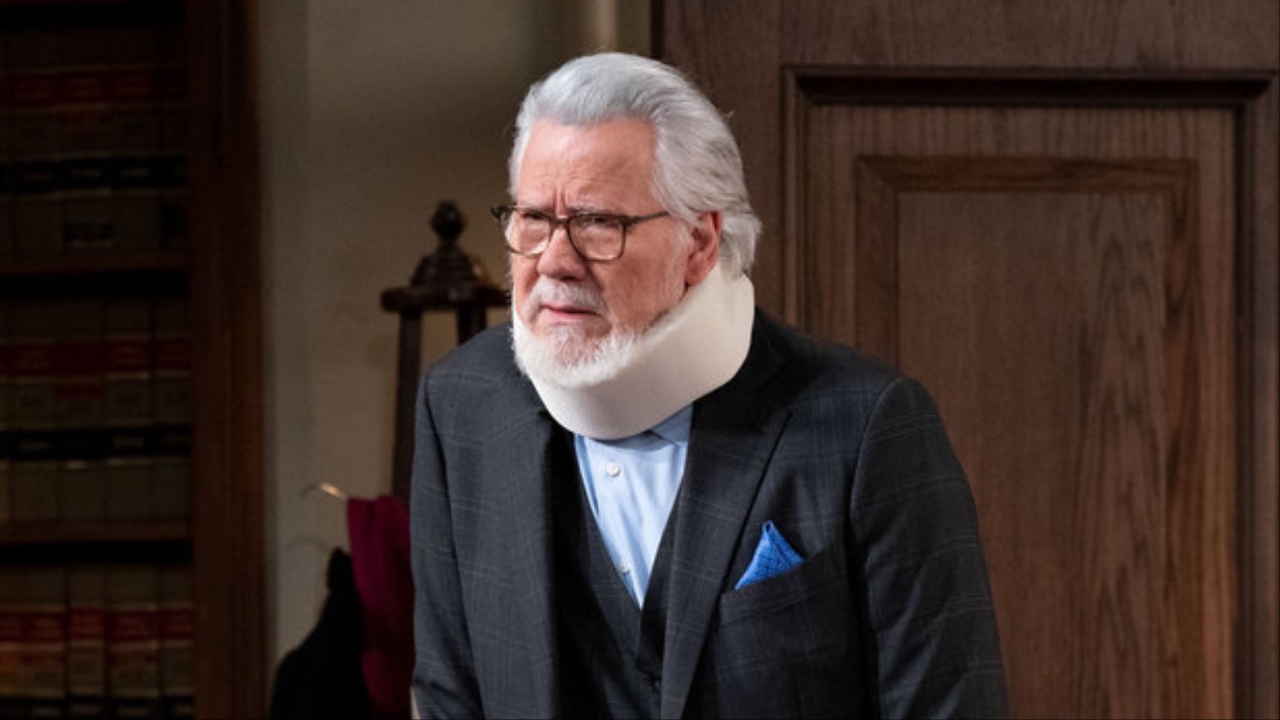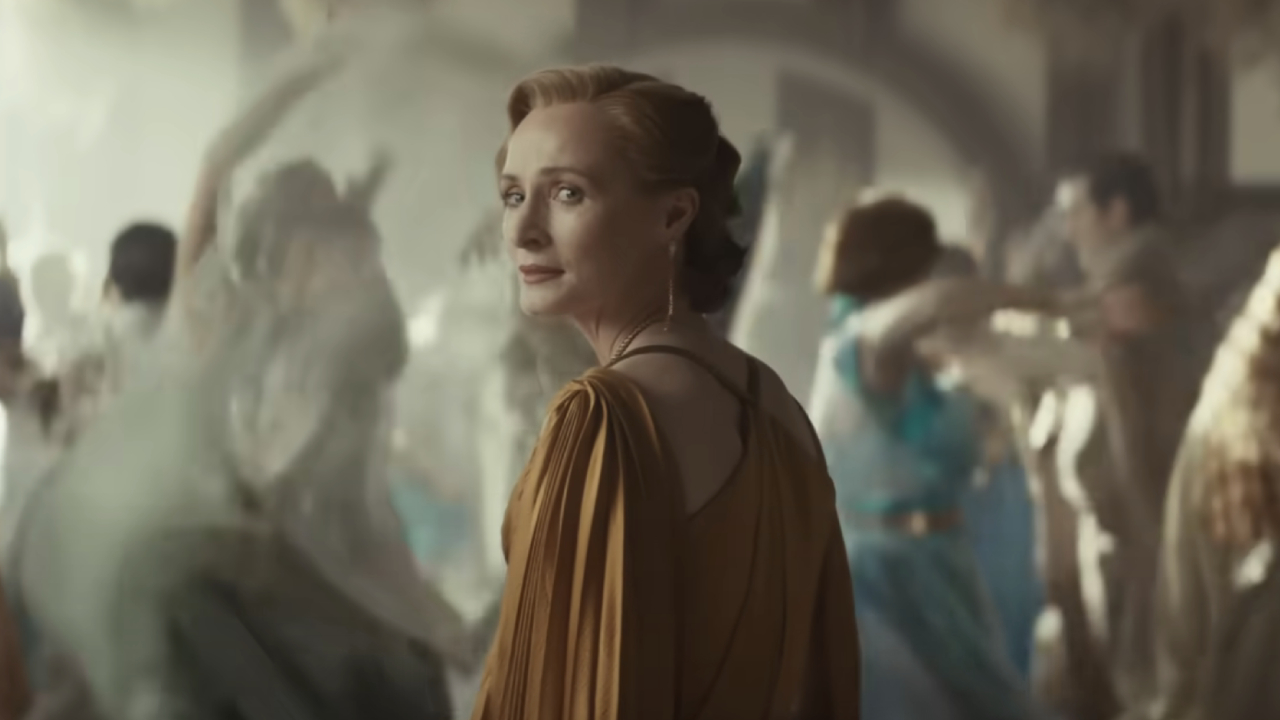Incredible War Stories From The Making Of Bruno
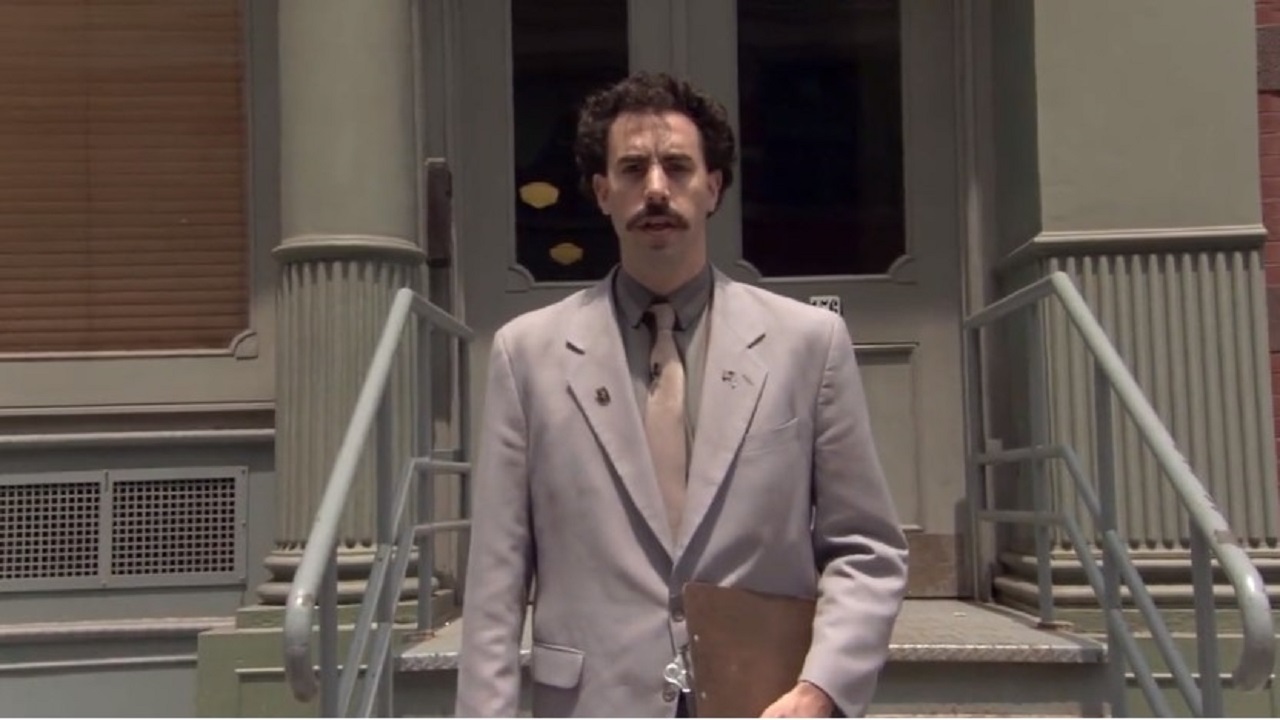
Every Hollywood movie comes with a stack of production notes, released to journalists and prospective film critics. Normally these are a patent bore, full of canned interviews in which stars talk in vague glowing terms about the people they worked with and the movie itself. Bruno though, is as always a little different.
Today Universal Pictures sent us production notes for Bruno. Instead of the usual bunch of fluff, contained within them is an in depth, behind the scenes look of just what it takes to make Bruno happens. Contained within Bruno’s production notes are just a sampling of the war stories of the movie’s guerilla filmmaking crew. This is the stuff journalists never get in interviews with Sacha Baron Cohen because, of course, he’s always in character and as far as Bruno’s concerned there was no movie, it’s just his life.
But there is a movie and making Bruno often means risking life, limb, and prosecution to get the perfect shot while under attack by angry mobs of terrorists, chased by violent Hasidic Jews, aimed at by homophobic hunters, and stared at by airline travelers. Below is Universal’s detailed look at what Cohen and the crew went through, from Bruno’s production notes.
Strip Search Me: Fashion’s High Price
When Baron Cohen and his fellow writers imagined setting up Brüno as a reporter at a European fashion week where he would meet his Waterloo, they explored the various events that he could attend in a time frame that would work for filming. Not wanting to hedge their bets on one location, the filmmakers went to New York City, Paris and Milan and secured credentials for multiple seasons of those cities’ respective fashion weeks.
The team made it to Milan Fashion Week in late September 2008. They had imagined a gag in which Baron Cohen as Brüno would, dressed in a suit made entirely out of Velcro, exit a car outside a fashion week arena and sneak his way onto the runway; director Charles and the camera crew would capture it all. Early attempts to get into other shows failed when security recognized and banned all the key players of the production. The officers called the police and threw Camp Brüno out while they accused them of stealing clothing.
Brüno had been blackballed from Milan Fashion Week. The Italian Chamber of Fashion issued a press release to designers and warned them of the possibility Baron Cohen would try to crash their events; the chamber further advised access be denied to Brüno’s production company. With an image out on television stations and across the Internet, Baron Cohen was a man on the run. For their part, the Milanese police declared he would be arrested on sight. Everyone was looking to take down the fabulous talkshow host with the acerbic wit.
CINEMABLEND NEWSLETTER
Your Daily Blend of Entertainment News
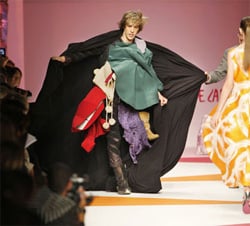
While any future attempts appeared fruitless, the team was not accustomed to throwing in the towel. Their solution? Baron Cohen insisted that they change everyone’s appearance and create an entirely new crew. Director Charles shaved his beard and modified his hairstyle; likewise, producer Mazer cut his hair, as did other members of the Milanese camera crew. Everyone involved in the final stunt changed his or her outfits. Complete with haute couture scarves and funky glasses, they became entirely new fashionistas to fit in with the others. This would be the team’s last chance to get the Velcro scene the writers had carefully constructed. Standing between them and the stunt? Extra police and tighter security were brought in to comb the area for Brüno.
Seizing an opportunity 30 minutes before designer Agatha Ruiz De La Prada’s fashion show began, the man who created Brüno knew what he had to do. The team secured him the proper credentials, and he walked in…not as the host of Funkyzeit Mit Brüno, but in the guise of an Italian photographer in a fabulous new outfit. Accompanied by his hair and makeup artist and co-writer Hines, Baron Cohen found a hidden nook backstage and transformed into Brüno. He attempted to reduce his rapid breathing as, inches away, models and security walked by him in disguise. The performer knew that if he were discovered that the team’s last, best chance of locking this critical scene would be over. Shortly after the show began, he seized his chance. Bursting out of his hiding place and onto the backstage, Baron Cohen sprinted past stunned models and lunged by waiting security guards.
The producers were euphoric when Baron Cohen (as Brüno in a Velcro suit covered with clothing) fell onto the runway. The crowd went wild in outrage while the cameras rolled. Just as the team caught the footage they needed, security shut the lights off and dragged Baron Cohen off the stage. Police cuffed the actor and hauled him to jail while his fellow crewmembers chased him down. Though he claimed that he’d made an honest mistake—he’d simply put on a Velcro suit and walked in—Baron Cohen was strip searched and questioned by seven police officers.
Undaunted, the team moved on to their next adventure. It wasn’t days later when Baron Cohen threw out the question: “Can we go to Paris next week for Fashion Week?” The other producers’ weary response: “Fine…we’re going to Paris!” They shot for two days in October and landed prime seating at such coveted events as Stella McCartney’s line unveiling and Jean-Charles de Castelbajac’s show. Brüno was clad in another outrageous outfit at the latter and, of course, making comments as the cameras rolled. That was not the last that self-professed style makers would see of Brüno.
Though the sequence wasn’t used in the final cut of the film, the production shot a scene at a Berlin nightclub where Brüno gave his farewell address to the fashion world. In the middle of an all-night rave, Brüno snuck into the deejay booth, killed the music and proceeded to deliver a 10-minute speech to the bewildered patrons.
According to the delusional fashionista, his audience was the recipient of “the most important speech since Martin Luther King, Jr.’s ‘I Have a Dream.’” Needless to say, the hyperkinetic ravers did not take well to their music getting cut and began taunting the strange man giving the unsolicited lecture. Bottles and cups full of beer began pouring down on Brüno. As the nightclub’s security muscled Baron Cohen from the club, the drunken ravers began lunging after the man who had interrupted their fun. During the melee, an assailant hit the performer in the neck while others tore at his clothing.
Brüno was officially out.
Locked and Loaded: Hunting Brüno
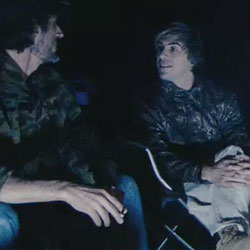
When he began production of Da Ali G Show several years ago, Sacha Baron Cohen believed he would have to use all his improvisational skills to lead people down a path and get them to react for the camera. Turns out he was quite wrong. Much goading or antagonism wasn’t necessary at all. He found that once interviewees had a lens in front of them and were prompted with uncomfortable scenarios, they reacted incredibly honestly. People don’t say or do things on camera that they don’t mean. Likewise, director Charles and the producers were fascinated to realize the levels of anger that came when some subjects were confronted with Brüno’s homosexuality. A simple act such as a kiss between two men enraged certain people, and all their reactions were caught on camera. Sometimes, they were infuriated to the point that they wanted to physically harm Baron Cohen.
This was most definitely the case when traveling with four hunters in Alabama. The men agreed to take the foreign correspondent and his crew along with them as they went hunting, but they wouldn’t be giving up their guns at any point. The crew attempted to get the men to relinquish their weapons during filming, but that wasn’t as easy as it sounds. In fact, when things got heated, guns got drawn.
Once the hunters realized Brüno was gay and believed he was hitting on one of them, they readied their rifles. The production found itself in a standoff in the dark with armed men who were growing increasingly agitated by Baron Cohen’s pranks. The hunters were stewing by the time the team pulled up stakes, and their reactions were soon reaching a boiling point. During one discussion, one of the men actually pulled a weapon on a crewmember and pointed it at him. It was time to get out of Dodge.
Terrorists to Supremacists: Engaging Fundamentalists
While director Charles and the other producers learned to expect the unexpected when it came to the mind of Sacha Baron Cohen, one thing they were not prepared for was the actor’s intentions for Brüno to help negotiate peace in the Middle East. The production’s general policy for interviews is that Baron Cohen allows subjects to keep going and give the most honest reaction they can to the scene he’s created with his fellow writers. With the suggestion that the company mingle with terrorists, however, the reaction among the normally brave key players was: “How the hell are we going to be do this and not get everyone killed?” They knew they couldn’t safely go to Jordan, Israel or the West Bank to set these up. Well, at least that’s what they thought.
Before they embarked upon the plan, the team met with Middle East experts to learn what lines could never be crossed; they engaged the help of key Palestinian, Jordanian and Israeli advisors to understand these unwritten codes of conduct. Whether they followed them, however, was another story.
This region proved to be the most intimidating and life-threatening location in which the team would shoot. After slyly getting the former Jordanian prime minister to take part in a 90-minute interview at his home, Baron Cohen needed to meet with the country’s royal family to smooth things over. And if that—coupled with engaging members of Mossad and other fundamentalist politicians in the region—wasn’t enough, Baron Cohen as Brüno headed to an area of the West Bank (in Zone C) that is not under Israeli control. If anything went wrong, there would be no help from the Israeli army. The filmmakers were truly on their own.
Surprisingly, the head of the Bethlehem unit of terrorist group al-Aqsa Martyrs’ Brigade agreed to meet with this correspondent. The leader of a sect known for suicide bombings sat with Brüno while an aide translated curious, highly offensive statements from the interviewer. And while they spoke, they were surrounded by the terrorist’s bodyguards…who grew more and more agitated by the barbs.
Once Baron Cohen and Charles arrived at the secret location in the West Bank, they were informed that Palestinian intelligence knew they were there and were keeping an eye on their every movement. With no time to waste, the team got the footage they needed and quickly headed back into protected territory.
What peace process would be complete without getting feedback from the other side? One of the more rapid experiments for the production was Brüno’s sashay through a Hasidic neighborhood in Israel. Among this conservative community, men and women are forbidden from showing much skin (including legs and arms). In retaliation for his offenses, furious members of the crowd chased Baron Cohen after Brüno took a stroll in skin-tight short shorts and a Little Debbie-inspired bonnet.
They were out for blood. A large, angry crowd of Hasidic Jews began to gather, intent upon harming Baron Cohen for his actions. The performer was forced to hide in the store of a compassionate shopkeeper until a van could reach him and assist his getaway. Only then could he hunch down on the floor of the getaway vehicle and avoid the growing potential riot situation.
Back in the U.S., the production assumed it would be on safer ground. Wrong. They engaged with a domestic terrorist who was as dangerous as any they’d encountered overseas. While the scenes they shot didn’t make it into the final cut of Brüno, the team lensed at a prominent white supremacist’s house. The man who had spent a decade in prison for violent hate mongering did not take it very well when Brüno introduced him to his then-gay lover, Diesel. The supremacist cocked his fist and went to attack Baron Cohen, who was able to avoid his punch and make it safely out of the house.
Don’t Ask, Don’t Tell: Breaching National Security
After Brüno decides he must become straight to find fame, he goes on a crosscountry journey to eradicate any hint of his homosexuality. A logical stop to do such complicated work? The U.S. Army National Guard headquarters in Anniston, Alabama, about 65 miles from Birmingham. Unfortunately, this unit of the National Guard was unable to guard its own base from one canny British infiltrator.
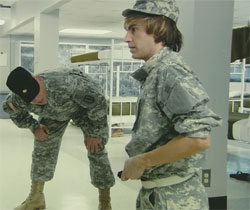
The production lucked into the scenario when they asked a contact at the National Guard if the production could imbed on-air talent for the day. They explained that the purpose of the visit was to let their audience know what it was like to live and work as a candidate in officer training school. While there, Baron Cohen, dressed in the latest style of fatigues (read: Dolce & Gabbana), perplexed his fellow soldiers with his stunts. It was not one of the finer days for national defense. When the production’s van came into the training ground, no one was asked for identification. Oddly enough, it turned out to be the perfect storm of confidentiality for the team, as the younger recruits were not allowed to speak freely unless they received the go-ahead by a commanding officer. If they had given permission earlier, the senior members would have known what several of the 20- to 22-year-old guys did: The man behind Borat was in their midst.
Once the crew heard the buzz that some of the young men suspected Baron Cohen was there, they packed up the team and got them out ASAP. As they were loading the performer into the van and driving rapidly off the base, the guards yelled out for them to stop and began to close the gate. Ten seconds too late, as Brüno (and the perfect amount of footage of his acting up during officer training school) were out the door. Had the team been moments later in their exit, the National Guard could have confiscated the tapes and they wouldn’t have seen the light of day.
When finally confronted with the question of “Did you know who that trainee was?,” the recruits responded with a firm: “Yes, sir! Sacha Baron Cohen, sir!”
Dangerous Cage Fights: Unmasking Homophobia
Aside from interviewing the terrorist leader in the Middle East, one of the most dangerous stunts during the production was the cage fight in which Brüno realizes the love of his life is in the ring with him. As they ensured during most scenes shot for the film, director Charles and the producers booked a back-up venue in case they didn’t get the right material on the first day of shooting. If needed, they could intercut with footage and salvage the bit. They knew that once word was out that the production was in town, it would spread like wildfire; they had to stay one step ahead of the public.
Nowhere did the filming get more dangerous, however, than when interviewees and other subjects of the film saw the relationship develop between Brüno and his traveling companion, Lutz.
In early June 2008, the production worked with a venue in Texarkana, Arkansas, to host a night of “Blue Collar Brawlin’” in which audiences would watch ultimate wrestling and get cheap beer. Brüno, transformed from hard months of life on the American roads learning how to be heterosexual, would battle it out with anyone who dared to challenge the macho man he’d become. This set-up would involve pushing the strict local and state morality standards to the edge.
It was vitally important for the production to avoid breaking any statutes or codes, and they always made certain they were on the right side of the law. As well, the team didn’t want to take chances with angry officers and made every effort to keep the police apprised and on their side. It didn’t hurt, however, to know they were close enough to two other states if they had to escape Texarkana.
The first night, the venue in Southwestern Arkansas would initially only supply police to serve as the arena’s security guards. But once the production told the officers that the audience might get unnerved when—during the course of the evening’s entertainment—two men kissed, the police reply was that they wouldn’t cover the event. They would, however, come back if any audience members called in a complaint and problems arose. And did they ever.
The cast and crew were now on their own.
As a producer, writer, creator and star of the comedy, Baron Cohen knew that it would be impossible for him to perform in character if he was concerned about his team’s safety. Moments after the first embrace between the two men, chairs were pulled up and tossed, a fighter who had been watching from the audience climbed into the cage and challenged Baron Cohen to a fight. Director Charles got none of the footage he needed, but Baron Cohen and the crew escaped just in time. The police did not return to the scene.
Overnight, they moved the entire operation several hours to the north to Fort Smith, Arkansas. Once there, the Brüno team was contacted by the Fort Smith police about what happened in Texarkana; these officers were reluctant to cover the event. As police were the only security certified to man the convention center, the production thought they were out of luck. Fortunately, the producers met with the chief of police and several other officers to secure the clearance needed. They left the meeting armed with a list of city ordinances that were stricter than the Arkansas state rules. Lessons learned, for the Fort Smith event, the team made sure there were no glass bottles that could be used as projectiles, and they wired chairs together so fans couldn’t pick them up and lob them into the ring.
Seconds after the kiss, attendees became furious. Soon after, one member of the crowd unwired a chair and threw it at Baron Cohen’s head. At that point, it was a near riot and the performers were rushed from the premises. Audience members and other fighters alike were screaming epithets and surrounding the bus and the field team. It ended after a stand off that lasted many hours, with 40 police officers from the Fort Smith division helping to rescue the cast and crew and quell the angry mob.

